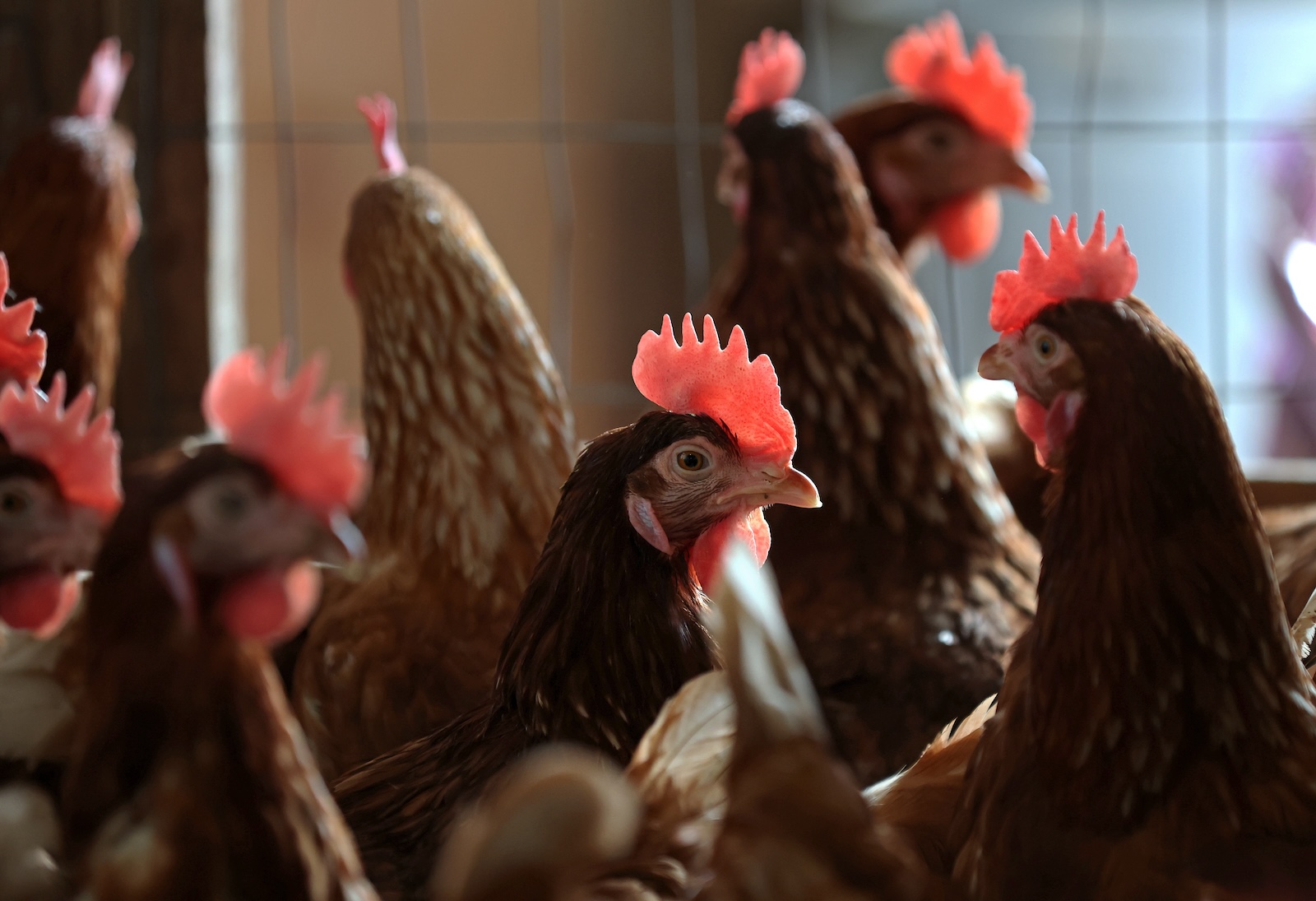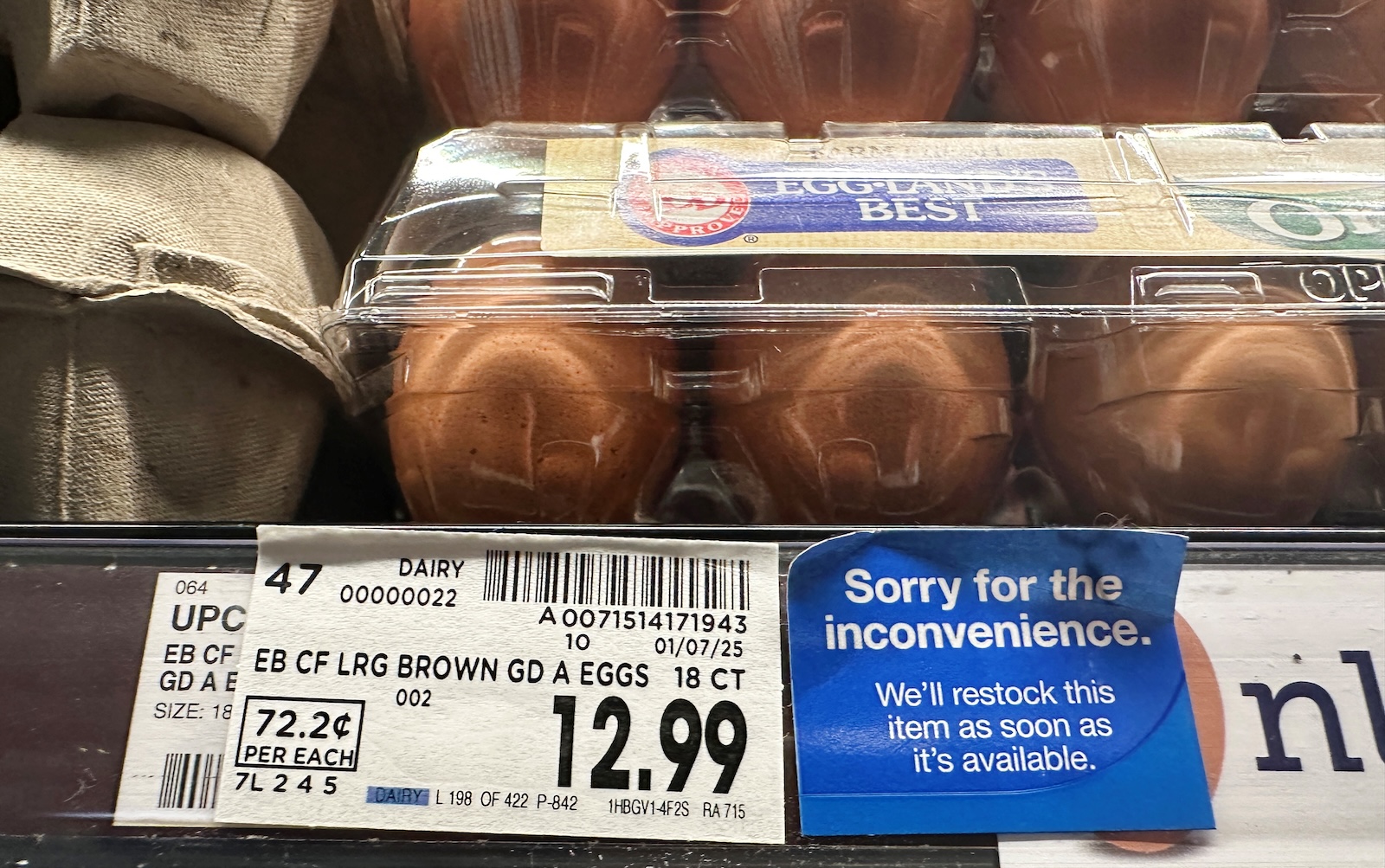Buying eggs at the grocery store has become a major headache for U.S. consumers, with the average price of a dozen large eggs in a typical American city reaching $4.95 last month. Since the start of 2020, the cost of eggs has increased by nearly 240 percent, according to data from the U.S. Bureau of Labor Statistics. Recently, acquiring eggs has become a game of luck — as shoppers find barren cooler cases and limits on how many cartons they can buy at the grocery store. The kitchen staple has gotten so hard to come by that thieves stole 100,000 eggs — worth $40,000 — off of a distribution trailer in Pennsylvania earlier this month.
President Donald Trump ran his reelection campaign on, among other things, a promise to bring down the cost of groceries. But in the first two months of 2025, egg prices have continued to climb, sending government officials in search of answers and interventions.
Jay Rosen, a Democratic senator from Nevada, urged Trump’s agriculture secretary this month to investigate whether egg producers are price-gouging. Administration officials, like Kevin Hassett, director of the National Economic Council, have pinned the problem on Biden-era policies and pointed the finger at inflation. But the rise of egg prices is both more and less complicated than that. Most inflation over the past few years has been caused by a mix of supply chain disruptions, rising demand, labor shortages, climate change, and fiscal policy. But the record-high cost of eggs today has been driven, primarily, by the spread of avian influenza on U.S. farms.
The current outbreak of bird flu in the U.S. was first registered by U.S. officials in 2022. Various strains of avian influenza are naturally found in the wild, and when ducks, geese, sparrows, robins, and other birds carrying the disease migrate around the country, they bring the virus with them and spread it to other birds — including poultry. The highly lethal strain currently infecting birds on U.S. farms — H5N1 — has been found in all 50 states and led to a precipitous decline in the population of egg-laying hens, sharply reducing the supply of eggs nationwide.
“Since 2021, we’re down 7 percent of our supply” of egg-laying hens, said Jada Thompson, an associate professor of agribusiness at the University of Arkansas with a focus on poultry economics. “That’s a huge amount of supply being down — and growing — right now.”
Over 160 million farmed and wild birds have gotten sick, died, or been slaughtered after exposure to the H5 strains of avian influenza, according to the Centers for Disease Control. The number of wild birds that have succumbed to the disease are likely severely undercounted, since birds in the wild are monitored far less closely than birds raised for profit. The last six months of the spread of the disease have been particularly brutal for farmers. In just the first two months of 2025, 22 million egg-laying hens have been impacted, said Thompson, already more than the number affected in the last quarter of 2024.

Justin Sullivan / Getty Images
In fact, egg-laying hen populations in the U.S. are likely the lowest they’ve been in the last decade, said Maurice Pitesky, an associate professor at the University of California, Davis, who has studied how avian influenza has spread from wild to domestic bird populations.
This — along with seasonal factors like the rise in demand for eggs over the holidays — has caused wholesale and retail prices of eggs to spike. “I think there’s a very strong relationship between egg prices and highly pathogenic avian influenza,” said Pitesky, using another name for H5 strains of the disease.
Climate change is also playing a role in rising egg prices — albeit differently from how it’s increased the price of other kinds of food. In recent years, extreme weather events like drought and flooding have disrupted food supply chains and sent shock waves through the economy that end up hitting grocery shoppers. In 2022, the Mississippi River entered a period of such extreme drought that ships transporting crops for cattle feed couldn’t navigate its channels. Meanwhile, in California, flooding and extreme heat hit some of the nation’s biggest suppliers of lettuce. As a result, the price of salad greens and some dairy and meat products rose. A study published last year projected that extreme heat driven by climate change will exacerbate overall inflation in nearly every country in the world by 2035.
When it comes to eggs, climate change is affecting supply more indirectly — by changing the migratory patterns and nesting habits of birds that carry avian influenza. As global average temperatures rise and extreme weather events scramble animal migration patterns and force some species north toward increasingly temperate climes, animals are crossing paths in entirely new configurations, making it easier for them to swap diseases.
Because bird flu evolves quickly and mostly in the wild, it’s hard for researchers to pinpoint exactly where and how climate change may be affecting its spread. What the handful of scientists who work on this topic can say for certain is that warming temperatures and rising sea levels are changing when and how birds move across continents, which may be influencing the unusually fast-paced and large outbreaks of bird flu that have been occurring for the past half decade or so.
On average, birds are embarking on their migratory journeys from south to north earlier each season due to warmer spring temperatures in the northern hemisphere, extending the season for bird flu. Sea birds are building their nests further from the coastline as sea level inch higher, forcing these birds into closer contact with other species. The fact that these outbreaks are affecting not just birds but also grizzly bears, seals, sea lions, dolphins, foxes, and ferrets — not to mention dairy cows, household pets, and humans — is also an indication that the virus is getting better at hopping between different types of animals.
“Climate change clearly affected patterns of migrations, and there are many references for this,” Marius Gilbert, a spatial epidemiologist at the National Fund for Scientific Research in Brussels, told Grist via email in 2023. “Demonstrating how this may have affected transmission patterns is far more complicated to establish scientifically.” Gilbert coauthored a study published in 2008 that projected that the most tangible effect of climate change on avian influenza would be to shift transmission among wild birds.

Frederic J. Brown / AFP / Getty Images
Other factors also contribute to the spread of bird flu. Pitesky argued that land management — for example, how closely farms are built to wetlands and other waterfowl habitats — can contribute to higher rates of H5N1 among domestic bird populations. So in order to curb the spread of avian influenza, which he said is endemic and never going to fully go away, policymakers could pay closer attention to where farms are located.
For shoppers wondering when egg prices will drop, relief may not arrive for some time. “I would expect prices to come back down at some point,” said Thompson, adding that egg prices are not “sticky” — they don’t jump up and stay high. Over time, they recover.
When that happens depends on future outbreaks and how quickly the egg industry can restore its flocks of hens. Farmers can take stricter biosecurity measures to keep their flocks safe, like making sure wild birds can’t get into chicken coops or feeding bins and limiting outside visitors. The federal government also seems to be considering vaccinating poultry, but industry groups say it would negatively impact overseas sales. If, hypothetically, there were no more avian influenza cases starting tomorrow, it might take the egg industry about six months to recover, said Thompson. But that’s unlikely — and with Easter just a couple of months away, consumers can expect to see another increase in demand for eggs.
“Just how deep that recovery will happen and how soon that will happen is the question on everybody’s mind,” said Thompson. “I don’t think anybody can tell you with accuracy” when it will happen.
